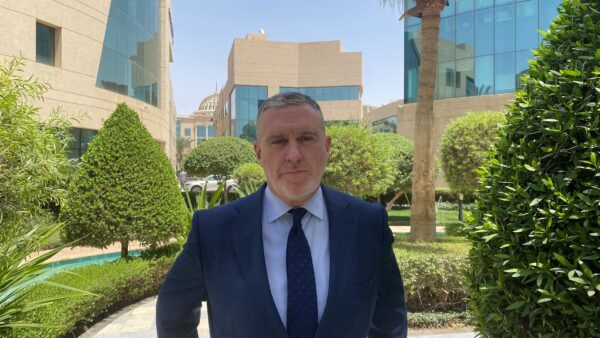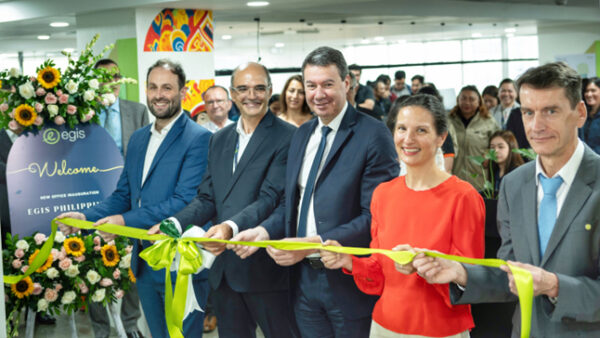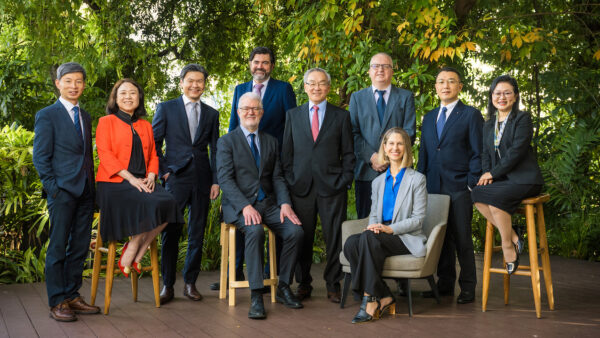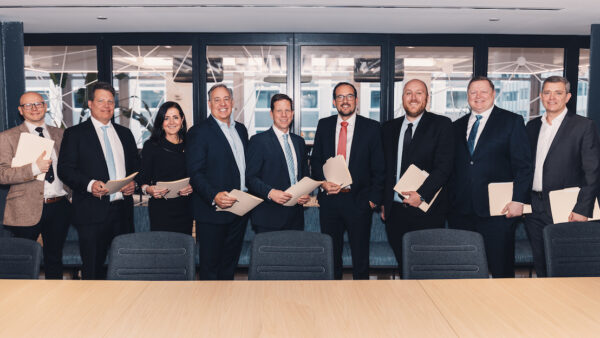10 June 2013
PlanIT Valley is going to happen, insists Living PlanIT’s Steve Lewis, as the latest roll-out of its technology gets underway at London City Airport. By Rod Sweet.
Living PlanIT, the technology company that claims to be revolutionising the way buildings and whole cities operate and get built, received a boost in March when a consortium it leads was picked to try out an “Internet of Things” system at London City Airport.
Embedded sensors and internet-enabled “machine-to-machine” communications will monitor passenger movement, allowing the building and its mechanical and retail systems to respond automatically in this pilot project funded by the UK’s Technology Strategy Board.
Intelligent queue management, baggage tracking, personal gate reminders and food pre-ordering are some of the possible benefits of the system being devised by companies including Cisco, Hitachi, IBM, Philips and Living PlanIT, with the latter’s Urban Operating System bringing it all together.
The pilot is the latest real-world application of Living PlanIT’s Urban OS, which the company’s CEO, Steve Lewis, a former Microsoft executive, says puts it 10 years ahead of the world’s top building control systems providers like Honeywell and Siemens.
In an interview with GCR, Mr Lewis said that Living PlanIT, which he co-founded in 2006, is now “cashflow positive” and will imminently announce major roll-outs of its technology in Brazil with top property developers and a mining concern.
He also said that construction of Living PlanIT’s long-delayed centrepiece project, the high-tech PlanIT Valley development in Portugal, will start in the fourth quarter of this year, with the first phase operational in 2014.
He added that Living PlanIT is “a likely candidate” for public listing, and that investors from Silicon Valley had priced the company “beyond a billion dollars”.
Persevering in Paredes
The “Internet of Things” trial at London City Airport, set to run until March 2014, is a recognition of Living PlanIT’s vaultingly ambitious vision of buildings and cities that function as responsive computers, allowing for intelligent resource use and the high-level, city-wide coordination of systems.
Lewis has claimed that this approach would radically change the property business model by allowing software developers to write “apps” for buildings – relating to anything from security and entertainment to health and education -Â that provide building owners a whole new revenue stream.
“The PlanIT OS was designed to integrate any form of sensing with any form of physical control, provide the spatial analytics, and then applications,” he said.
He has also claimed that Living PlanIT is developing a construction delivery model based on an electronically connected, global supply chain of components that would mimic the way cars or aircraft are built, rendering the traditional construction industry, even BIM, obsolete.
“The construction industry is not ready for the onslaught of competition it’s just about to get,” he said in a 2010 interview. (A backgrounder is available here.)
However, evidence of these claims has been slow in coming. Living PlanIT’s showcase was to be a greenfield development in Paredes, Portugal, a brand new tech city with a population of 220,000 people, made up of researchers and other staff employed by Living PlanIT’s partner companies and their families.
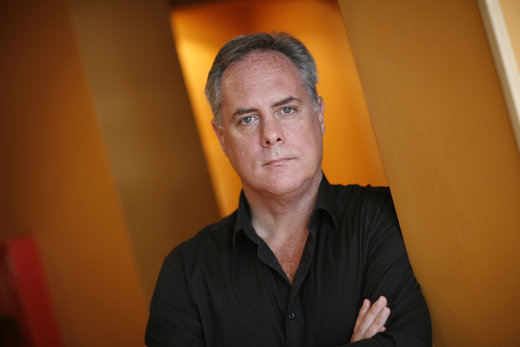
Steve Lewis, CEO, Living PlanIT
PlanIT Valley, as it is called, would be built with Living PlanIT’s revolutionary delivery model, and serve as an R&D centre for the Urban OS platform. Construction was supposed to begin in early 2011 with the first phase, accommodating 7,000 people, complete within a year.
That didn’t happen. In September 2011 Lewis said the eurozone crisis had made it difficult to get financing.
Meanwhile, the site is still empty, but Lewis is adamant that PlanIT Valley is going ahead.
What’s different now, he said, is that the company is making enough money from licensing its Urban OS that it can afford to fund PlanIT Valley itself.
“We’ve grown so much on our software business, which has always been our principal business, that instead of having to go out to the market for debt, we’re able to do that off our cashflows,” he said.
“So later this year, the second half of the year, I would suspect we’ll invest between $100m and $150m in starting to put a research and development centre, some supporting hospitality, executive briefing centre and a little bit of residential, [and] retail, onto the site.
“My goal is that we can get all of the necessary next stage approvals for construction during the fourth quarter of this year and to have the first parts of our R&D centre and hospitality open next year.”
Busy in Brazil
Lewis said that over the past year Living PlanIT has been licensing its technology “at quite some scale” into various industry sectors.
He was speaking, in fact, from Recife, Brazil, where he said Living PlanIT is working on a roll-out of Urban OS with two of the country’s biggest property developers.
He said one, a residential developer, would “use our digital simulation and modelling environment to restructure everything from the underlying masterplans to the physical structures of buildings and their materials”.
For a mixed-use developer, with plans that are due to break ground in September, the application of Urban OS is even deeper.
“They’re using our software for what is effectively a massive, virtual, multivariant equation to figure out how to make best use of land and how to guarantee certain outcomes whether they be economic, social or environmental in their focus,” he said.
Lewis also said that a renowned Brazilian mining concern is applying Living PlanIT technology in aerial drones to carry out photon-sensing of the ground to a depth of 4km to provide molecular spectrography for mineral extraction.
The device capturing the ground conditions, he said, was a “radical new form of sensor, effectively a form of laser” provided by a company he declined to name with connections to the military. Announcements would come soon, he said.
“Beyond a billion”
Asked whether mining was not outside Living PlanIT’s core sectors, Lewis insisted it was all part of the radical expansion of internet-enabled sensing, analytics and control leading to the Internet of Things, or as he prefers, the “Internet of Everything”.
Furthermore, he said, on top of being “cashflow positive”, Living PlanIT’s leadership on the concept is attracting investors.
“Silicon Valley has identified us as leading player in the Internet of Things technology,” he said, “and the pockets of the Valley to invest in tech firms [are] very deep right now.”
He declined to say what Living PlanIT’s revenues were. “We’re obviously a likely candidate for an IPO, so we’re having to manage our information quite carefully. We’ve attracted investors, major investors from Silicon Valley who are pricing the company beyond a billion dollars.
“I would imagine we’ll treble that valuation next year, given the growth of the company.”
Lewis said Living PlanIT’s role as lead and integrator in the London City Airport pilot shows how far ahead of the game it is.
“We collaborate with a lot of guys, and a lot of the folk you would think would be… our principle competitors are just nowhere near where we are and so they’re using our technology,” he said.
“The traditional guys… provide building control systems today. They would be the Siemens, Johnson Controls, Honeywell, GE, and others. They are probably about 10 years off the market in terms of where the Internet of Everything is going.”





